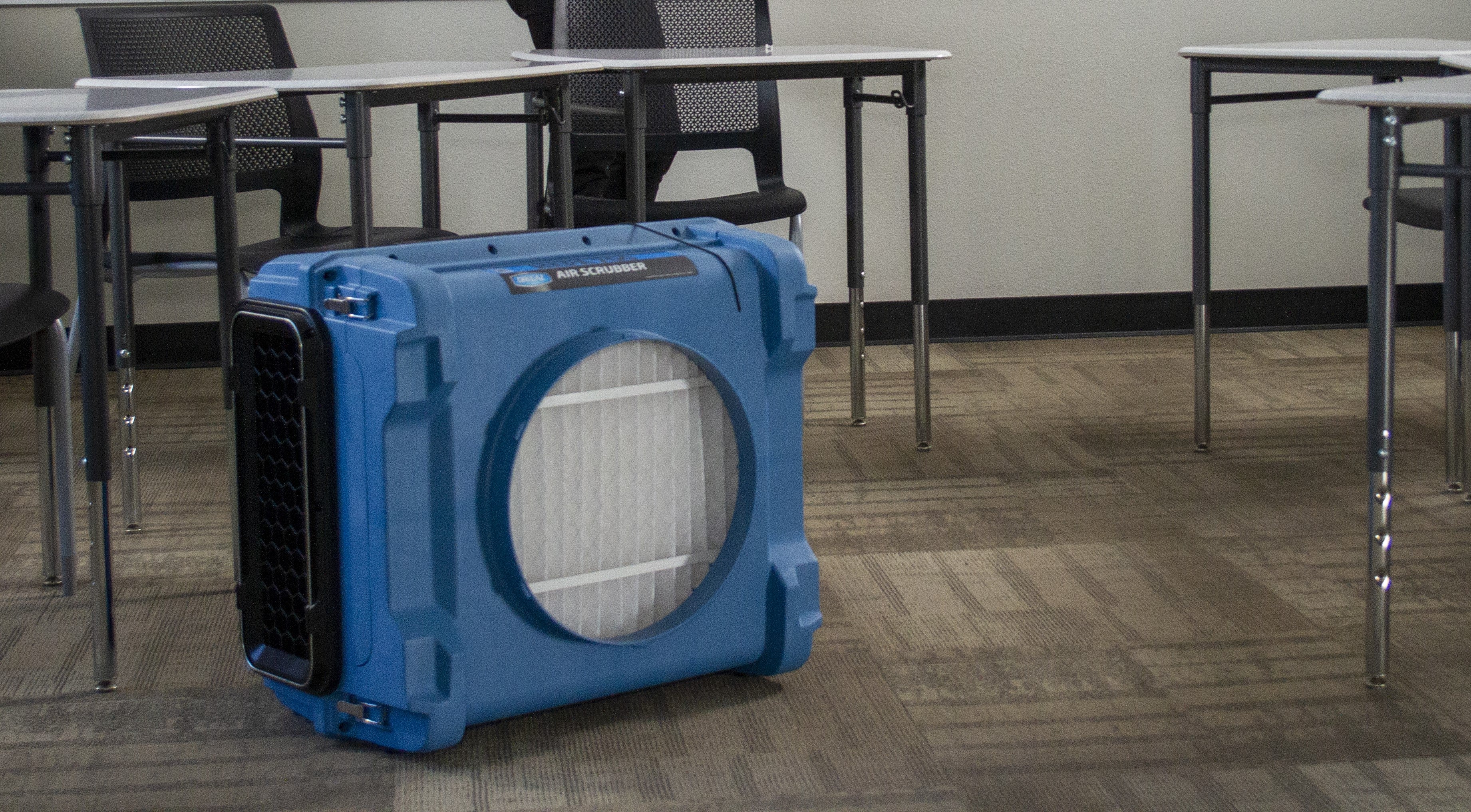By Michael Haws, Ready 2 Respond Assessor
Indoor Air Quality (IAQ) refers to the quality of interior building air that may impact human health, comfort or work performance. Even seemingly “clean” air contains indoor air pollution – microscopic particles, allergens, and volatile organic compounds (VOCs) that can cause health issues, especially for sensitive occupants.
Maintaining good IAQ reduces health risks for building occupants and invests in their long-term health and productivity. It also lessens liability and can keep HVAC systems and other important equipment clean from build-up to function optimally.
Factors Affecting IAQ
- Common indoor pollutants include volatile organic compounds (VOCs) – from products used to clean and maintain buildings to materials used to build or furnish spaces – plus particulate matter, carbon monoxide, and mold.
- Humidity – water vapor in their air – can impact IAQ, contributing to mold growth. Excess humidity from weather or flood-related incidents needs to be controlled to also prevent virus, bacteria, and other pathogen transmission.
- Remediation processes – even using floor dryers after clean water flooding – can send potentially harmful particles from carpets into the air. The EPA warns against additional substances that become airborne after flooding, including pathogens from sewage and dirty water, dust and debris, and chemical vapors.
The use of air filtration equipment is critical for any drying project. Mold begins to grow when moisture remains for 48 hours or more – and inhaling it can cause a range of adverse health effects and allergic reactions. Mold quickly spreads by producing spores that travel through the air, so filtering out these airborne particles before they settle is crucial.
Mitigating Risk
The most important way to mitigate IAQ risk is through proper air filtration. IAQ can fluctuate as events occur and can vary by location, so the most efficient way to improve IAQ is with portable air scrubbers.
What is an air scrubber?
An air scrubber is a portable filtration system that draws air from the surrounding environment and passes it through a series of filters. Each filter stage operates with increasing efficiency, with a net effect of producing the cleanest air possible at the highest rate of airflow through the system.
Choosing the right equipment
The type of air scrubber and filters necessary to handle a particular project can vary, but here are basic guidelines for selecting the best one:
For smoke, viruses, mold, and operation in critical or sensitive areas, choose an air scrubber with 99.99% efficiency, such as the Dri-Eaz HEPA 700 or MediClean AP 700.
- Clearing smoke and other odors and fumes requires activated carbon pellets, not just a layer of carbon or carbon-infused filter, so the HEPA 700 is best, as it can be outfitted with an activated carbon prefilter.
- The AP 700 offers the bonus of UVC LED protection against viruses and bacteria on the HEPA filter plus antimicrobial additives* to inhibit the growth of bacteria and mildew on the unit housing, so it’s ideal for healthcare and senior living environments.
For clean water damage and construction projects, choose a unit with easily accessible prefilters, as they need to be changed frequently to ensure optimal performance.
Other air scrubber features to consider include: portability, ease of ducting, and low noise level. Both the HEPA 700 and AP 700 satisfy these needs, as they are extremely quiet, ductable, and stackable for storage or transport.
Are you concerned about the quality of air in your facilities? If you’d like to learn more about how to enhance your facility's indoor air quality and reduce the risk of excess moisture, contact our team of experts at: ready2respond@r2rprogram.com or 888-208-5401. We are ready to help.


Share:
Three Keys to Prevent Risks of Improper Drying
What is a ‘Dry Standard’ and Why Does it Matter?